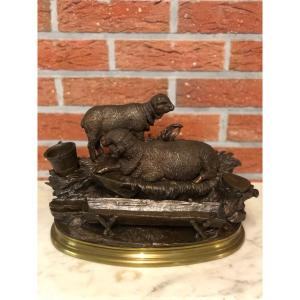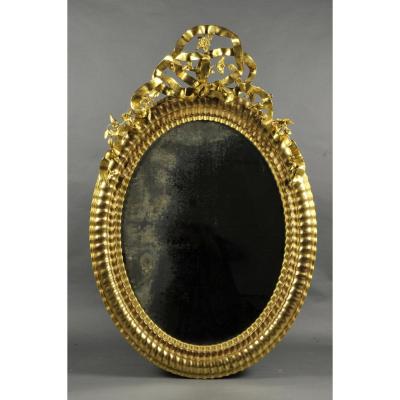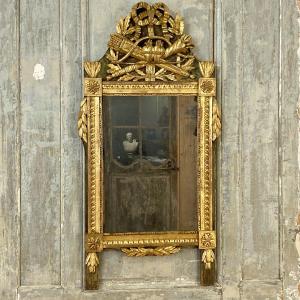Engraved "Maison Alphonse Giroux à Paris" on the back.
Maison Giroux became a leading supplier of luxury goods to a royal clientele that included Louis XVIII and Charles X. Although they sold a wide range of items - from paintings to stationery - under the direction of Ferdinand Duvinage and his wife, Rosalie-Éléonore-Antoinette, they developed a special technique patented as "mosaic combined with metal cloisonnement" (see pp. 342-343). Alphonse Giroux et Cie was founded as a "luxury store, gallery, stationery, tabletterie and cabinetmaking" after humble beginnings as a paint and varnish workshop. The founder, François-Simon-Alphonse Giroux, had studied under the neoclassical painter Jacques-Louis David and had worked on Notre-Dame de Paris. He retired in 1838 and was succeeded by his eldest son Alphonse-Gustave, who in turn was advised by his younger brother André, who served as artistic director. Originally, the shop produced small items, but it eventually grew into a large-scale retail outlet with workshops. The business flourished after the return of the monarchy in 1814 and greatly expanded its range of merchandise. It is best known for its small luxury items and festive gifts, many of which bear the maker's label. Many pieces incorporated imitation Sèvres porcelain mounts. The company also made late Empire-style veneered furniture in East India satinwood and maple, but these are rarely seen on the open market. The publication of Meubles et fantaisies: Maison Alp. Giroux in Paris around 1840 circulated a series of ninety-five color images of many different types of furniture in a style loosely called "Napoleon III" or "Second Empire," but which in fact predates the Second Empire style and is firmly established as a new style emerging from the Bourbon revival under Louis-Philippe. In 1834, the famous French poet, essayist, and art critic Charles Baudelaire, at the seemingly improbable age of thirteen, wrote in a letter to his brother of "Giroux's universal store."295 Baudelaire's visit shows how fashionable Giroux had become. Alexandre Dumas bought a cover for one of his manuscripts as a gift for Tsar Nicholas II in 1296. Tsarina Alexandra Feodorovna also furnished rooms with Giroux's help.297 A furniture collection in the Musée des Arts Décoratifs in Bordeaux may well include pieces commissioned in 1826 by Mademoiselle, the future Duchess of Parma. 298 Imperial clientele continued in later decades, in the form of Empress Eugénie, who spent 5,500 francs in 1855 on Charles Labbé's elaborate naturalist desk, illustrated and carved in full relief with birds and squirrels among branches and painted panels. The Giroux firm was highly innovative and was one of the first to disseminate the Chinoiserie style, while also experimenting with Rivart, using his patented technique of inlaying porcelain into the carcass of furniture. 300. The wide range of the firm's style can be glimpsed in the accompanying illustrations, from the typical mid-19th-century Lenis Revival to innovative designs, including the use of the technique patented by Duvinage.








































 Le Magazine de PROANTIC
Le Magazine de PROANTIC TRÉSORS Magazine
TRÉSORS Magazine Rivista Artiquariato
Rivista Artiquariato